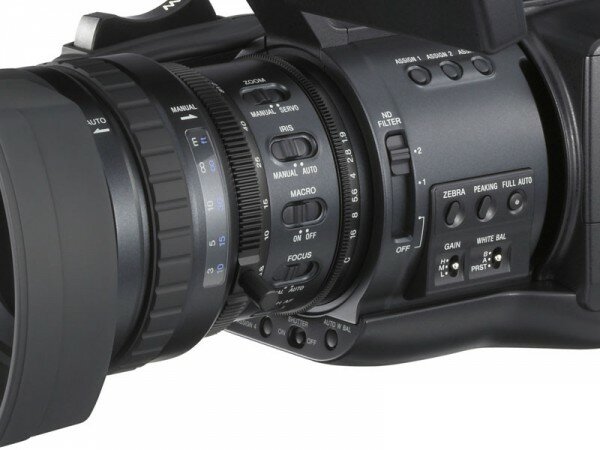Have You Used Your Manual Mode?

In my job, I’ve been supplied a lot of footage of varying quality. Certainly, when I was at university, there were mistakes that we all made when getting to use the camera for the first time. Today, I’m going to talk a little bit about how to get the quality of your shots higher when you first get chance to play with a semi-pro or pro level camera such as a HDSLR or even something like a Sony Z1. I’m going to talk about things such as white balance, focusing and audio levels but using them in manual mode rather than leaving them on automatic.
White Balance
One mistake that I made and I have seen on some lower quality footage is leaving the white balance on automatic rather than setting a manual white balance. What happens, sometimes, is you’re doing a pan and the colour of the white changes from a blue-ish white to a orange-ish white. By leaving it on automatic, what happens is half way through the shot you get a massive colour shift resulting in a very amateur looking shot. Leaving it on automatic may also spoil the white balance on a static shot by choosing the wrong white because of different temperature of white.
What you should do is set your camera to manual white balance. What options you get will depend on the make and model of your camera, but you will either be able to choose from a preset range of colour temperatures for white, or some may have a button you can push to assess the white in the shot and try to match it. Ideally, you should use a white or grey card for this, but at a push you can actually get by using a sheet of white paper.
So, remember next time, check your white balance before you shoot.
Focusing
Focusing is another thing like white balance that can spoil your shot or make your shot look amateurish. Ideally, you should put your camera into manual focus mode, zoom all the way in or even use the focus assist button to focus on whatever is the main thing in your shot, then leave it in manual focus mode. That way, you can be sure that if something moves or changes in the shot, the camera doesn’t try and be too clever and focus on something in your scene that you don’t want it to, therefore spoiling your shot. Putting your camera in manual focus mode is applicable to most type of shots, whether they’re static or a tracking shot. The only exception to this rule can be if you are doing hand held documentary or reality type filming where it is impractical having to manual focus all the time.
So, remember next time you shoot, before you hit record, have you checked your focus?
Audio
Another amateur mistake is getting bad audio. If you use the inbuilt mic in your camera, you’re probably going to get pretty bad audio. Not only are these mics usually fairly poor quality, the pattern is usually very omni-directional which means it’s captures alot of background noises. If you can, you should get something like a lapel mic or a shotgun mic which are more directional and will get clearer audio than the in built mic. As well as using a directional mic, if your camera allows, you should also switch your camera audio input monitoring to manual, that way you can get to levels with out them being too quiet or too loud. Using the automatic level on your input can sometimes result in the audio level varying wildly or lots of hiss and background noise as the automatic gain tries to compensate for the low audio level.
A lot of HDSLR’s lack either manual controls altogether or are very fiddly to control. One way around this is to use a standalone audio recorder to record the audio and then sync them up in the edit.
So, remember, as with white balance and focusing, you should remember to check your audio levels.
Hopefully these are some good tips if you’re picking up a camera for the first time or you are in education and trying these things out for the first time. There’s a lot more to learn about these three things and more, but these should at least help you on your way.

Hi, I’m from Nottingham in the United Kingdom. I’ve been writing about motion graphics on Motion Design Love for a while now, as well being a Video Editor and Motion Designer by Day. I probably spend most of my waking hours either doing something with motion graphics or thinking about stuff I can do with motion graphics. I’m looking forward to writing some great articles for Fuel Your Motionography, I hope you’re all looking forward to reading them!


Always good to play in Manual Mode. Though I often find myself shooting in Auto Mode (I know, I know) for convenience and speed sake, Manual Mode has saved my footage more times that it has harmed it… just be careful to REMEMBER when you are in Manual Mode so you don’t worry in the middle of the shoot what went wrong with your gear!